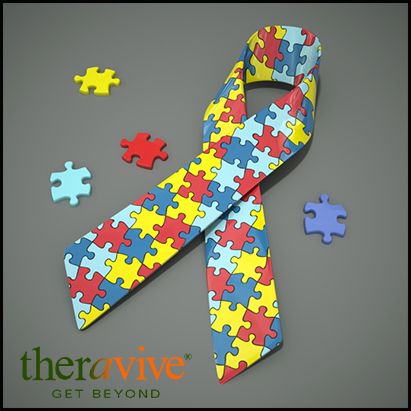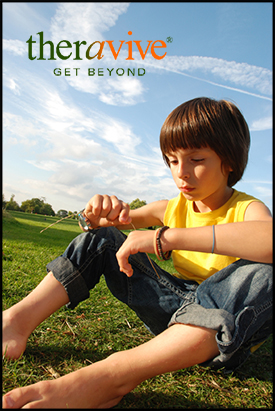 Dear Abby is a popular advice columnist known to be accurate and tactful. But in 2008 she was ridiculed for referring to autism as a mental health disorder.
Dear Abby is a popular advice columnist known to be accurate and tactful. But in 2008 she was ridiculed for referring to autism as a mental health disorder.
In a note to Dear Abby, “Uncle with a Secret” sought her advice. His niece is mildly autistic and, at the time, no one wanted to share this information with his parents, the girl’s grandparents.
For her response Dear Abby wrote, “When a family member is diagnosed with a mental health disorder, some families consider it to be something shameful….”[i]
Within weeks the columnist received a slew of feedback. One note said, “Autism is a neurological disorder, NOT a mental health disorder.”
After seeking the guidance of a medical professional in this field, Dear Abby recanted her original statement saying, “Autism is most accurately described as a “neurodevelopmental disorder.”[ii]
Is Autism a Neurodevelopmental Disorder or Mental Health Disorder?
Looking to the Diagnostic and Statistical Manual of Mental Disorders for clarification, it seems autism spectrum disorder (ASD) is listed under the title of neurodevelopmental disorder – but more on this later.
What the Dear Abby debate brings to light is that people are confused about what autism spectrum disorder is at a time when the rate of diagnosis is increasing 30 percent every two years. This indicates the need for an in depth conversation that defines autism, explains its symptoms and raises awareness of its growing presence in North America.
Defining Autism Spectrum Disorder
Autism is a multifaceted diagnosis with many categories. After all, it is a spectrum disorder meaning the term itself encompasses a range of behaviors, cognitive abilities and social skills. A person who is diagnosed with autism may have significant impairments while another has nearly indistinguishable symptoms.
In effort to understand autism spectrum, the fifth edition of Diagnostic and Statistical Manual of Mental Disorders (DSM-5) defines autism spectrum as a disorder under the overarching label, neurodevelopmental disorder. Furthermore, ASD is a term that also encompasses other categories. The three sub categories include Asperger’s Disorder, Pervasive Developmental Disorder and Not Otherwise Specified (PDD-NOS).[iii]
 Childhood Symptoms and Common Behaviors
Childhood Symptoms and Common Behaviors
Autism spectrum disorder comes in all shapes in sizes. It affects many parts of a person’s brain, resulting in behavior that is common among people with ASD diagnoses but seen as different from the general public. For instance, their communication and social interaction tend to be off and small talk is difficult because many people with autism have high IQs and obtain a lot of information they are eager to dispel. Also, repetitive behavior is common and many people with ASD experience interests that are elevated to the importance of obsessions. [iv]
While these symptoms are most evident in independent adults, they usually appear in toddler years. This is why Dear Abby was right to call ASD a neurodevelopmental disorder. Other conditions that appear in early years of life can be referred to with the same term. However, because ASD symptoms last into adulthood and need to be managed appropriately throughout the years, what began as a neurodevelopmental disorder is often explained of adults as a mental illness ("Autism Spectrum Disorder").
Ultimately, autism spectrum disorder is a neurodevelopmental disorder which is, as classified by DSM-5, a mental health disorder. But the response that encouraged Dear Abby to retract her original, correct statement was not entirely wrong. The letter went onto say,“Autism is reaching epidemic proportions. These families need support, not misprints.”
The Autism Epidemic: 2008 and Now
At the time of the 2008 Dear Abby article, studies reported the prevalence of ASD in the United States went up 78 percent between 2002 and 2008.[v] The most recent U.S. Centers for Disease Control and Prevention (CDC) report claims ASD diagnoses are up 30 percent from two years ago. Now, in the U.S., one in 68 children has Autism. This means that over one million people under the age of 21 have Autism. [vi]
It remains unclear why this increase is occurring. The director of the National Center on Birth Defects and Developmental Disabilities wonders what could be driving this change, too. In a recent DisabilityScoop article, she said, “It could be that doctors are getting better at diagnosing autism in those with typical IQ scores or that there are more kids with autism or a combination of both factors (Langtree).”
The increasing number of autism patients remains a mystery, but considering the attention it receives from scholars, researchers, government and media, the classification of autism is commonly known. It is a neurodevelopmental disorder that is understood in the context of mental health disorders.
Understanding Autism
Learning about mental health disorders and the different classifications of autism spectrum disorder is beneficial for people with children who have autism as well as society at large. With over one million children currently diagnosed, it is a mental health disorder every person should know. At the very least, to increase awareness in society and extend sensitivity to local communities, seek to understand the signs and symptoms of autism. Read blog articles, books, and stay up to date with current events, like the CDC reports mentioned in this article.
For those who understand autism on a more intimate level, maybe those with children who are on the spectrum, there is a wide variety of treatment options available. Routine behavioral therapy from a young age can propel a child towards a healthy future. This may include approaches like applied behavior analysis, developmental exercises, structural learning, speech therapy, social skills training and occupational therapy.[vii]
Learning self-care and social skills in a positive, affirming setting can give a child the confidence he or she needs to develop a positive self-esteem and good relationships with others. One of the best relationships a child with autism can have is with a therapist, a person outside of the family unit that can defuse stress and instill him or her with a sense of independence.
Living with autism is nothing to feel shame about. In fact, because of the growing numbers of autism diagnoses, it can be empowering to see how well people with autism acclimate to society. What started as a neurodevelopmental disorder early in childhood does not need to carry the stigma of a mental health disorder in adult years. With a proper treatment plan, strong support system and positive outlook, a person with autism can be seen for who he or she really is - unique and wonderfully made.
_________________________________________________________________________________________________________________________________
[i] "Dad Keeps Daughter's Autism a Secret From His Parents." Dear Abby. uexpress, 9 June 2008. Web. 28 Mar. 2014. <http://www.uexpress.com/dearabby/2008/6/9>.
[ii] "Mystery of Autism Begins With Deciding What It Is." Dear Abby. uexpress, 30 July 2008. Web. 28 Mar. 2014. <http://www.uexpress.com/dearabby/2008/7/30>.
[iii]"DSM-5 Criteria for Autism Spectrum Disorder." New York- Presbyterian Hospital/Weill Cornell Medical Center/Weill Cornell Medical College. Disabled World, 3 Oct. 2012. Web. 28 Mar. 2014. <http://www.disabled-world.com/health/neurology/autism/dsm5.php>.
[iv] "Autism Spectrum Disorder." National Institute of Mental Health. N.p., n.d. Web. 26 Mar. 2014. <http://www.nimh.nih.gov/health/topics/autism-spectrum-disorders-pervasive-developmental-disorders/index.shtml?utm_source=rss_readers&utm_medium=rss&utm_campaign=rss_full#part1>.
[v] “ASD prevalence estimates among children aged 8 years increased 78% during 2002–2008 (from 6.4 to 11.4 per 1,000).”
"Prevalence of Autism Spectrum Disorders — Autism and Developmental Disabilities Monitoring Network, 14 Sites, United States, 2008." Centers for Disease Control and Prevention. N.p., 30 Mar. 2012. Web. 28 Mar. 2014. <http://www.cdc.gov/mmwr/preview/mmwrhtml/ss6103a1.htm>.
[vi]Diament, Michelle. "Autism Rates Spike Again, CDC Says." Disability Scoop. N.p., 27 Mar. 2014. Web. 28 Mar. 2014. <http://www.disabilityscoop.com/2014/03/27/autism-rates-cdc-says/19237/>.
[vii] Langtree, Ian. "What are Autism Spectrum Disorders?." Disabled World. N.p., 16 July 2010. Web. 28 Mar. 2014. <http://www.disabled-world.com/health/neurology/autism-spectrum.php>.
Christie Hunter is registered clinical counselor in British Columbia and co-founder of Theravive. She is a certified management accountant. She has a masters of arts in counseling psychology from Liberty University with specialty in marriage and family and a post-graduate specialty in trauma resolution. In 2007 she started Theravive with her husband in order to help make mental health care easily attainable and nonthreatening. She has a passion for gifted children and their education. You can reach Christie at 360-350-8627 or write her at christie - at - theravive.com.